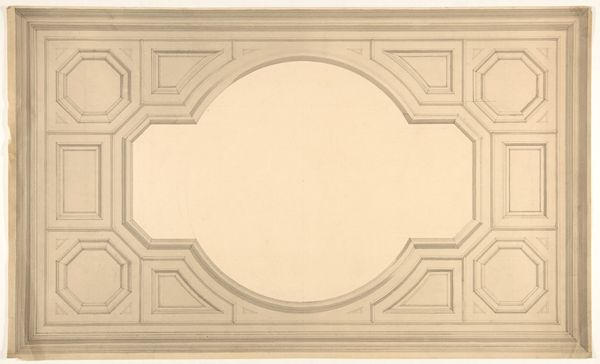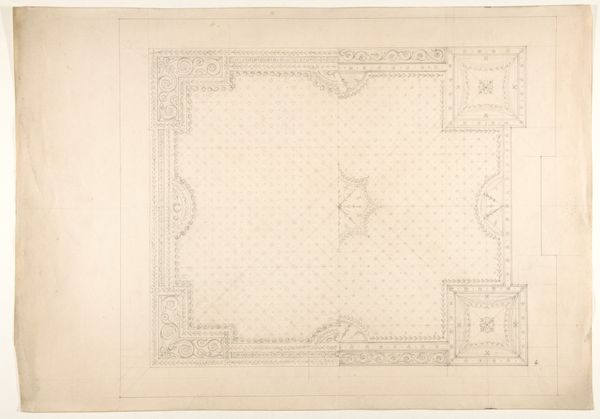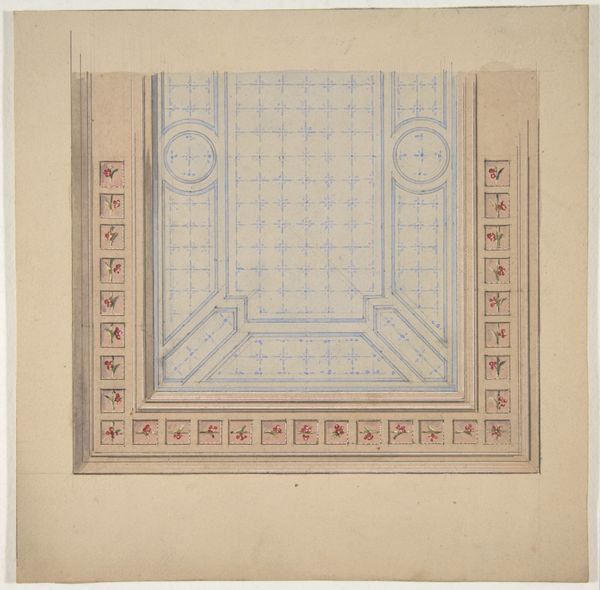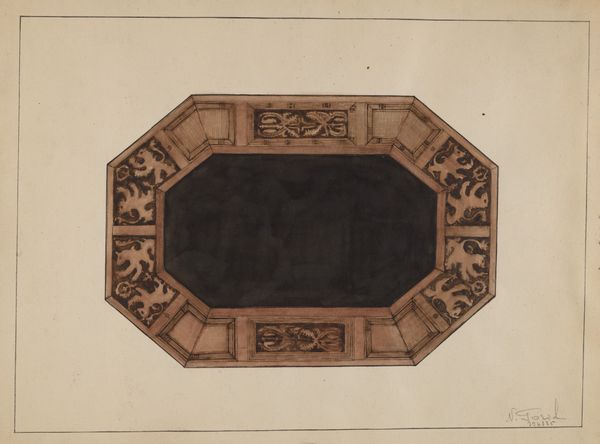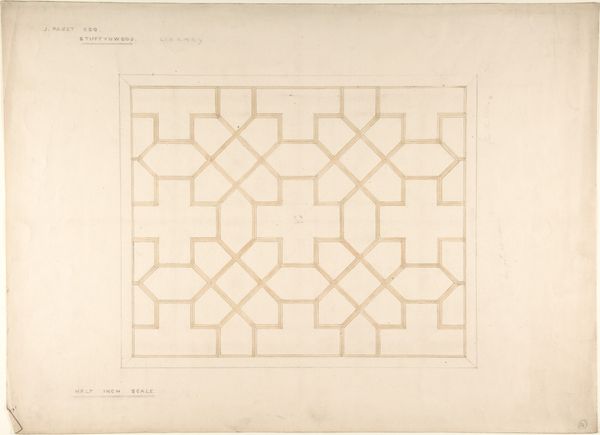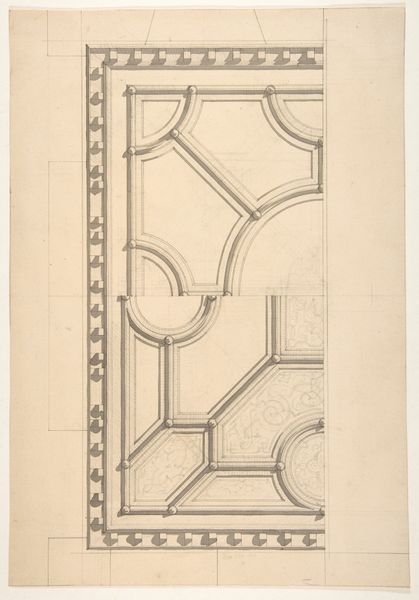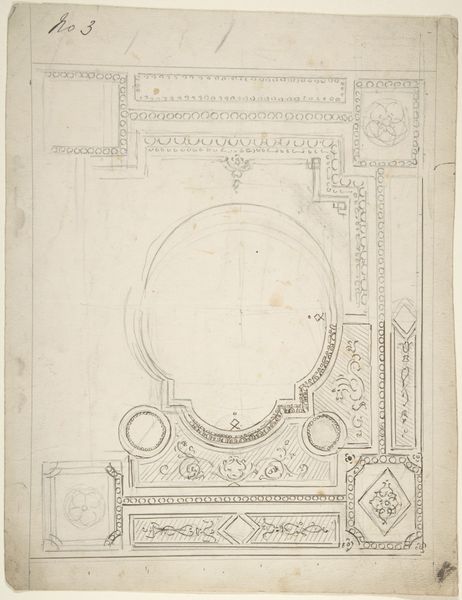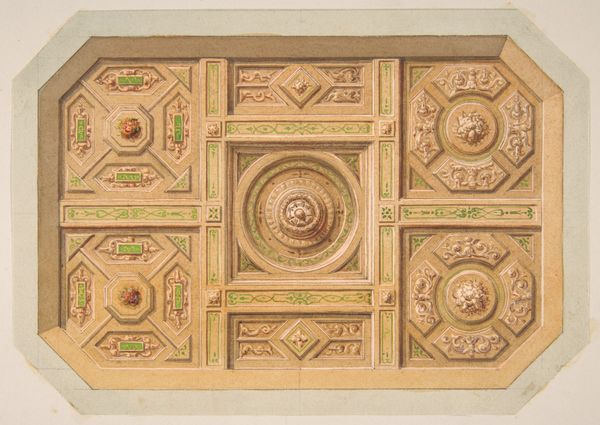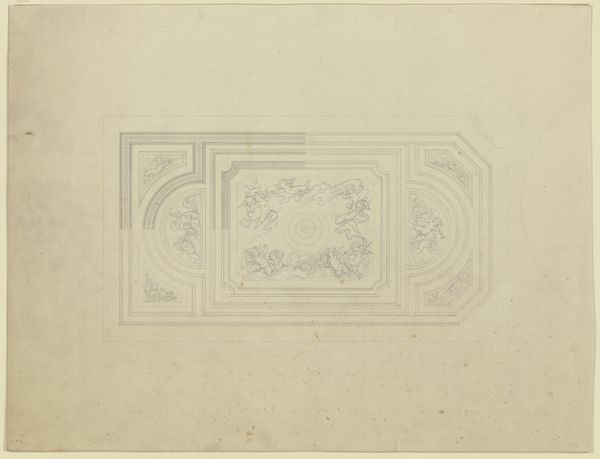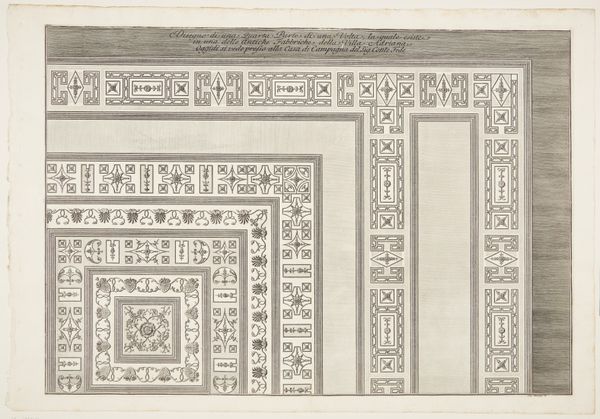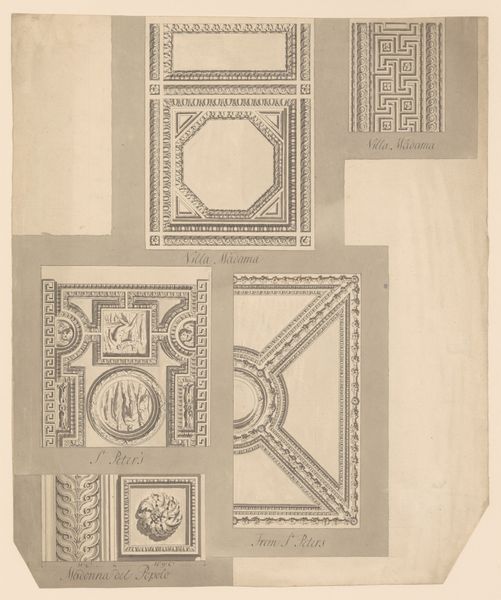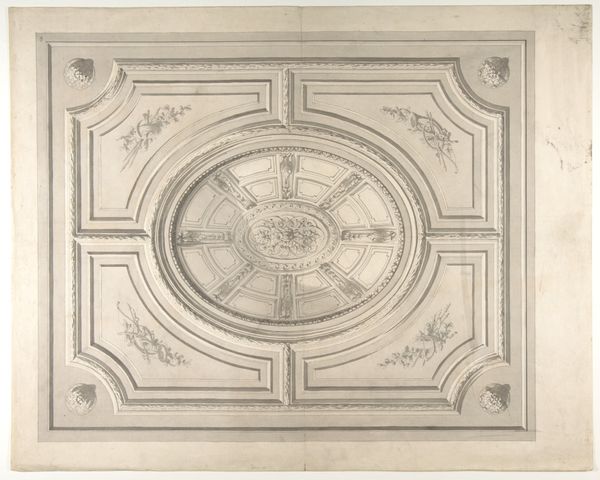
Dimensions: Overall: 10 3/8 x 14 15/16 in. (26.3 x 38 cm)
Copyright: Public Domain
Curator: Here we have “Design for a Ceiling,” a drawing made sometime between 1850 and 1900, currently held at the Metropolitan Museum of Art. It’s a beautiful example of neoclassical design. Editor: My first impression is one of stark formality. The cool gray lines and rigid geometric patterns create a sense of order, but almost to the point of feeling cold and distant. Curator: It’s the materiality, isn’t it? The paper and delicate print elevate what could be just an industrial blueprint to something almost precious. Editor: The way the geometric forms interlock – the rectangles, the octagons – speaks to something beyond mere decoration. They are arranged in a symbolic order. Did period understand it in a similar light? Curator: Absolutely. Consider the history of ceiling design, which dates back to ancient civilizations. Ornamenting ceilings in classical architecture represented a kind of idealized world—it's the opposite of considering just raw resources like lead and marble. Editor: But isn't it interesting how even this supposed "high art" relies on material? The paper itself, the ink, the printing press that made the reproduction possible… These elements ground the symbolism. The paper even shows wrinkles! It adds layers to the design, it suggests this work had some utilitarian intention, like as one stage of decoration. Curator: I appreciate that point. And there's definitely a connection to craftsmanship here, as someone actually had to inscribe or incise this, however mechanized by then. What I’m seeing also evokes palaces, stately homes and wealthy benefactors. The idea was to give the inhabitant a feeling of being among the privileged or powerful class by association. Editor: Right. I am reminded how spaces have encoded power. What did people "look up to," materially and symbolically? The visual interplay in this ceiling's plan has a definite influence, as viewers and users understand spaces they exist within. Curator: In short, something like "Design for a Ceiling," as austere as it appears at first glance, has both an accessible materiality as a line drawing while invoking powerful feelings or aspirational ideas. Editor: It’s remarkable to consider that a relatively simple drawing on paper carries such an intellectual legacy, impacting the space it aimed to define.
Comments
No comments
Be the first to comment and join the conversation on the ultimate creative platform.
